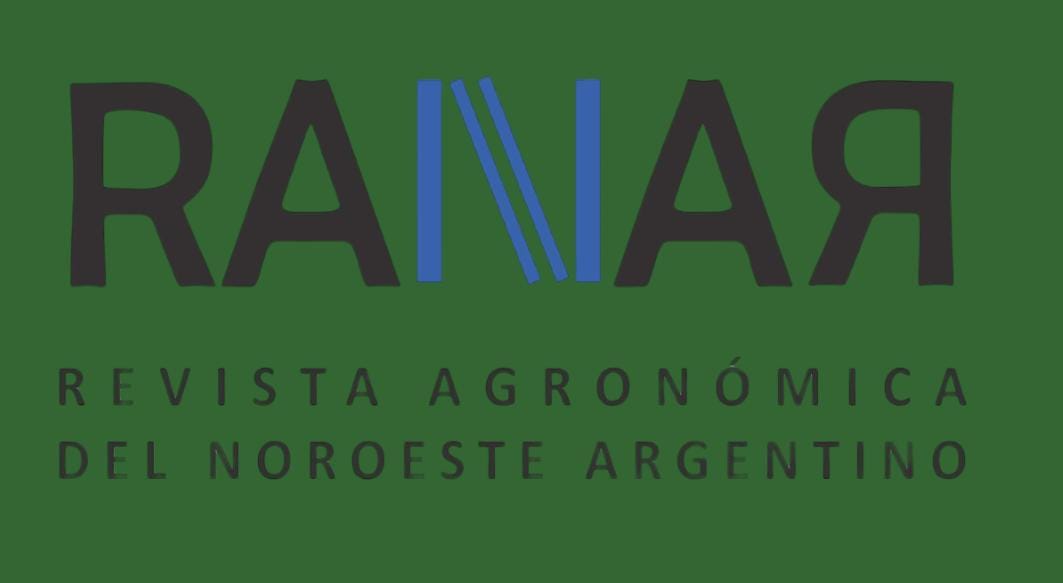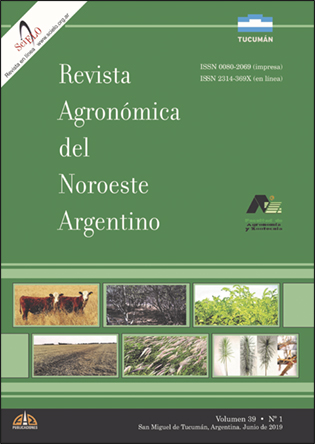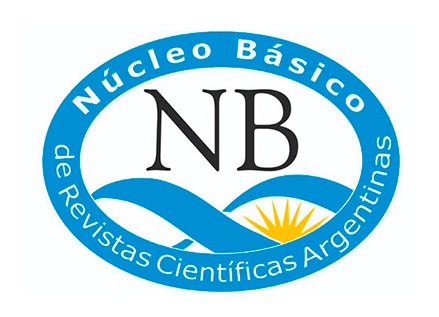Leaf-Stem Relationship at the phenological stage of flowering, in natural and cultivated grasses of the Semiarid Western Chaco of the Trancas department, Tucumán, Argentina
Abstract
The objective of the work was to determine the Leaf-Stem Relationship (L-S R) in natural and cultivated grasses of the Semiarid Western Chaco of Trancas department, Tucumán, Argentina, at the phenological stage of flowering. Trichloris crinita, Setaria leiantha and Aristida adscencionis (natural) and Chloris gayana cv. Common and Cenchrus ciliaris cv. Texas 4464 (cultivated) species were evaluated. The sampling was carried out cutting the whole forage plant at ground level. In each plant, leaves and stems were separated, and dried in stove until constant weight. The L-S R resulted from dividing the dry weight of the leaf component into the dry weight of the stem component, for each of the species and samples evaluated. The data obtained were analyzed by means of an analysis of variance for a completely randomized design. Results show that the L-S R of grasses in similar phenological stage, presents a great variability allowing inferring that, as the result of having a more favorable L-S R towards the leaf component, C. ciliaris and S. leiantha would have better nutritional value in full bloom, than C. gayana, T. crinita and A. adscencionis. Knowing L-S R of a forage allows guiding on the most appropriate time for consumption, the level of defoliation to apply during grazing and its place within a sequence of use in relation to other species of the same period of grazing.









